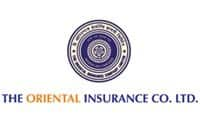- 1
- 2
- 3
- 4
- 1Destinations
- 2Trip Date
- 3Travellers
- 4Medical history
Popular Destinations

Now covers COVID-19
- No medical checkup required
- Pre-existing coverage available
- Instant Policy Issuance
- Medical expenses, Trip cancellation/delay, Loss of baggage & Passport etc.
- 24x7 claims support
* Price shown is for a 90 day trip to Vietnam with 50,000 dollar coverage for an adult of age 25 years
Best Time to Visit Vietnam
History may not have done enough justice to Vietnam’s popularity, but despite the tumultuous times it has become one of the most preferred places to travel in South East Asia. The country is a hidden gem for all budget travelers with its pristine sand beaches and limestone islands, along with a range of mountains and friendly communities and its age-old customs-abiding tribes. Keep on reading to learn more about this well-kept secret and how you can make the most of your trip!
Travel Insurance Plans
- Individuals
- Sr. Citizens
- Students
Best Time to Visit Vietnam for Ideal Weather
Depending on your plans, Vietnam can be a country with a very versatile climate and weather conditions. It has a tropical monsoon climate and is pretty humid throughout the year. Because of its topography, the country has three major weather types:
- Northern Vietnam: November to April are dry and have sunny skies with somewhat cooler temperatures. May to October is hot and humid with high rainfall. Temperatures range from 10°C to 28°C throughout the day.
- Central Vietnam: It is very hot from January to August, with daily showers from September to November, with temperatures usually above 30°C
- Southern Vietnam: November to April is a very hot and dry season with clear skies. Heavy rainfall lasts from June to August. The temperature here usually ranges from 25 - 35°C throughout the year.
To put it simply, Spring and Autumn is the best time to visit Vietnam, which depends on the region of your travel. Towards February end and March onwards is the best month to visit the whole country. Come April, temperatures start rising and you may need to change your plan due to heat.
Best Time to Visit Halong Bay
Probably the best highlight of a Vietnam trip, this karst seascape is a spellbinding experience. It is also a UNESCO World Heritage Site, known for its thousands of limestone islands in the Gulf of Tonkin. The bay's scenery can be best experienced by a boat preferably while you're on an overnight cruise so that you can view the beautiful sunrise.
March (Springtime) is one of the best times to visit Halong Bay as the skies are clear with warm and dry weather around the central highlands and the southern coast.
Avoid visiting the place from May to October as the chances of heavy rainfall are higher. You can also visit Halong Bay in autumn, November being the best time to take a junk boat cruise.
Best Time to Trek in Sapa Countryside
One of the most popular trekking destinations in Vietnam, this countryside is famous for its vast rice fields bordered by the jagged Tonkinese Alps, otherwise known as the Hoang Lien Mountains.
This beautiful rural landscape is home to deep valleys and is the center of different ethnic minorities. The region is also famous for having Vietnam's tallest peak, the Fansipan Mountain.
The best time to visit Sapa is between March and May. If you don't mind the cold, then you can consider coming here in January and February. However, these are the foggiest months with temperatures dropping to freezing levels. During the week, the town is not as crowded which may be a good option for you. The dry season lasts from January until June, which is preferable to the cloudy or chilly temperatures.
Trekkers have multiple options to hike or trek here through small villages spread all over the mountain range. Sapa, one of the oldest and most famous hill stations, has been standing here since the French colonial era and is a bustling tourist center. If you're interested in shopping in Sapa, then you can visit the Sapa Market that opens every day from 6:00 AM to 2 PM. The town is pretty small and can be navigated easily with the help of kind locals!
Best Time to Sunbathe in Nha Trang
If your aim to go anywhere is for the sand, Nha Trang is the king of all the beaches in Vietnam. The place is very well maintained and lies along the shore of Nha Trang city. The summer is packed with locals as well as foreigners. However, given its pleasant and comfortable weather, you can take a trip any time of the year. The summer starts with May which may be too hot for some but is open for ocean tourism, ecotourism, and many water sports. The best time to visit Nha Trang is between February and April; with temperatures around 26-28 C and minimum precipitation.
Other months can be used to visit the nearby historically significant places like Bao Dai Villa, Ponagar Temple, and Vinpearl. Even during the monsoon, this area experiences wet months only from September to December. The weather is warm between January and August which also helps you to lower your budget. Avoid traveling to Nha Trang during August, as tropical storms and typhoons may affect your travel insurance plans.
Most Affordable Time to Visit Vietnam
Vietnam is already a very affordable tourist destination. However, for many people under a tight budget, you can consider visiting in October or November as these are the wet months. For students with limited funds, there are many cheap deals available between November and February. Make sure that you have good travel health insurance in case you find yourself in an undesirable situation.
Worst Time to Visit Vietnam
Because of the monsoon, it is highly recommended to visit Vietnam during its dry season, which is between December and February. The chances of heavy rains causing mudslides and rains are higher during the monsoon which may put a dampen on your plans. In reality, there is no bad time to visit Vietnam. This is because the country spans more than 1,000 miles from north to south and that means a drastic change in its climate while traveling. Thus, it is best to divide the time between the northern and southern parts of Vietnam.
Northern regions like Hanoi and Sapa can get pretty cold, whereas southern regions like Saigon and Mekong Delta can get extremely humid. May to October is usually the rainy season in regions like Hoi An, Halong Bay, and Hanoi. In January, there may be low visibility and cloud cover due to the cold. Hanoi is prone to floods during July and often causes washed-out roads.
Hikers and trekkers should avoid visiting Vietnam in August because of the high rainfall in almost all parts of the highlands.
STANDARD TERMS AND CONDITIONS APPLY. For more details on risk factors, terms, and conditions, please read the sales brochure carefully before concluding a sale.
Policybazaar Insurance Brokers Private Limited, Registered Office - Plot No.119, Sector - 44, Gurgaon, Haryana - 122001 | CIN: U74999HR2014PTC053454 | Policybazaar is registered as a Composite Broker | Registration No. 742, Valid till 09/06/2024 | License category - Composite Broker | Contact Us | Legal and Admin Policies
* Price shown is for a 90 day trip to Vietnam with 50,000 dollar coverage for an adult of age 25 years











































































